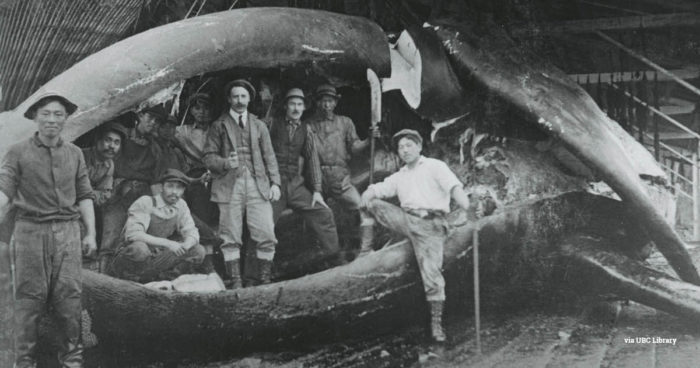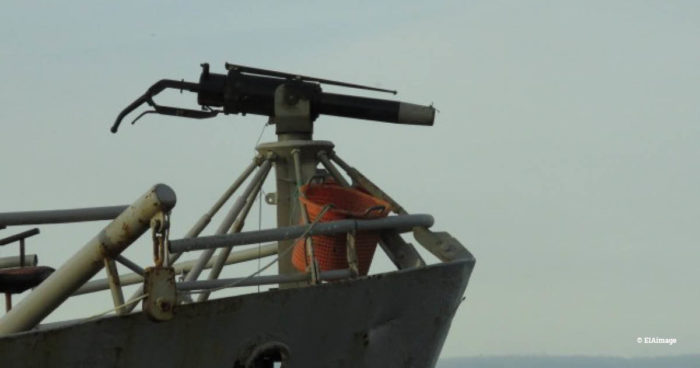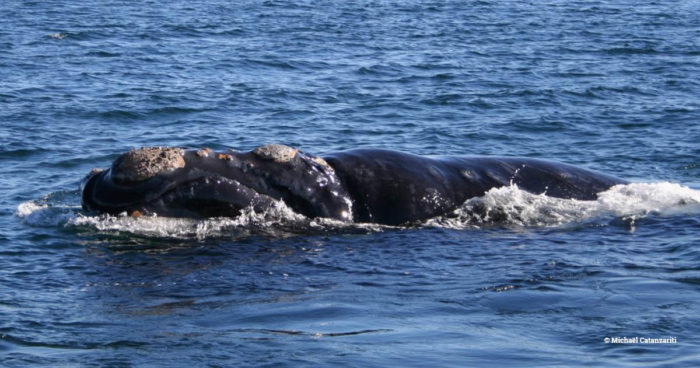IWC at 70: A gruesome whaling club matures into a respected world leader
Today (10 November 2018) marks the 70th Anniversary of the International Convention for the Regulation of Whaling (ICRW) coming into force..

The International Whaling Commission (IWC) was created to undertake the business of the Convention, operating from offices in Cambridge, UK. There were 15 initial signatories but today it has 89 members.
The 70th anniversary provides a useful moment to reflect on how this international agreement has evolved over seven decades, its importance and EIA’s contribution to its work.
My blog of 2 December 2016 marking the signing of the Convention 70 years previously detailed how the IWC has progressed from those early days when this gruesome whalers’ club divided up the whale spoils of the ocean.
The history of whaling is shameful, with at least 2.9 million whales killed in the 20th century, devastating global whale populations in what is likely the largest removal of total biomass of any animal group in human history.

Workers processing a whale at a whaling station, Rose Habour, Queen Charlotte Islands, 1921, via UBC Library
The 1860s are recognised as the beginning of modern commercial whaling, with the introduction of the explosive harpoon in combination with steam-powered ships. Not even the largest and fastest whales were safe from the hunters and the Antarctic Ocean became accessible.
Oil was the driver of demand for whales before fossil fuels became so readily available. In the 20th century, whales were in high demand for meat and oil to manufacture products such as margarine.
The opening of the Convention’s preamble recognises “the interest of the nations of the world in safeguarding for future generations the great natural resources represented by whale stocks”.
The IWC, however, did not have a good start in fulfilling this mission. In the year after the Convention came into force, 43,814 whales were reported killed, including 7,781 blue whales, 21,708 fins and 8,901 sperm whales. Britain and its Commonwealth countries took second place on the slaughter leader board, killing 14,811 whales and Norway came top with 16,670.
The decimation of one species of whale after another peaked in the 1960s when an estimated 427,920 whales were killed in the Southern Hemisphere and 265,315 in the Northern Hemisphere – almost 700,000 whales in total. Japan was the top whale killer for the whole of the decade, taking over 200,000 whales. The USSR was second. Britain stopped whaling in 1965 but has the dubious record of taking 34 per cent of Antarctic blue whales killed between 1931-67 (70,548) – topped only by Norway which took 40 per cent.

Harpoon at the prow of a whaler, Iceland (c) EIAimage
The horrific global whaling statistics expose a dreadful era of crass destruction, gross cruelty and global irresponsibility.
A single profound decision made by members of the IWC in 1982, and implemented in 1986, has saved several whale populations from the brink of extinction. The international ban on commercial whaling, commonly known as ‘the moratorium’, is one of the world’s greatest conservation and welfare measures – 32 years on it continues to provide vital protection for whales.
Iceland, Japan and Norway place relentless pressure on the IWC to lift the moratorium. They use loopholes in the Convention to continue their whaling despite global condemnation. Norway is top of the slaughter leader board, with Japan second.
In the early 1990s, EIA’s vision and determination successfully persuaded the IWC to reject pressure from the whaling nations and seriously consider the impact of emerging threats to all species of whales, dolphins and porpoises (cetaceans), including pollution, climate change, ozone depletion, over-fishing and bycatch that are at least as potent as whaling. We argued that ‘safe’ catch limits could not be calculated without understanding the impact of these additional threats.
For over three decades, we have continued in this role, working internationally with NGOs and IWC member governments to counter whaling nations’ demands, ensuring the moratorium remains in place. We collaborate with the IWC in tackling non-hunting threats to cetaceans (the collective term for whales, dolphins and porpoises) and actively participate in its eminent Scientific Committee and work to improve the IWC’s governance and operations.

Southern right whale (c) Michaël Catanzariti
It was exciting and a privilege to attend the 67th Meeting of the IWC this September. It was particularly inspiring to see endangered southern right whales and their calves off the beautiful coast of Florianopolis, Brazil, a species which had been driven to the brink of extinction by 1937 when hunting was banned and is now making a slow but sure recovery.
Our blog following the meeting details the positive outcomes of IWC67. In the period between the 2016 meeting and IWC67 we worked hard with NGOs, the UK Government, the EU and other pro-conservation countries to ensure rejection of Japan’s proposal to enable IWC-endorsed commercial whaling and to endorse the commitment to tackling these growing non-hunting threats.
Our new report Commercial Whaling: unsustainable, inhumane, unnecessary and the accompanying interactive webpage provided succinct and easily accessible information to delegates at IWC67 as they worked to counter Japan’s proposal.
An exciting new area of IWC work turns the table on mass removal of biomass from the ocean. The IWC passed its second resolution endorsing scientific discovery, focused on increasing understanding of the important contribution cetaceans provide to ecosystem functioning such as carbon sequestration and fertilising the ocean with their faecal plumes. It is recognised that it is important to consider the detrimental impact on the space left behind if individuals are slaughtered and removed from the ocean, rather than trying to work out how many can be taken without damaging a population.
This 70-year-old organisation has put its shameful past behind it and matured into a highly respected world leader. It collaborates with numerous multilateral environmental agreements, working to protect marine ecosystems and cetaceans from numerous critical human induced non-hunting threats; these include entanglement and bycatch, climate change, ozone depletion, ship strikes and pollution caused by ocean noise, chemicals, plastics and other marine debris.
The new economic benefit of cetaceans is the joy of whale watching. The IWC has just launched the very exciting Whale Watching Handbook which aims to support the industry, its regulators and members of the public to ensure long-term sustainability for both the whale populations and the communities whose prosperity has come to rely on their presence.
Whales, dolphins and porpoises need the IWC. And the IWC needs EIA to help ensure commercial whaling is never resumed and growing threats to the ocean are mitigated. I feel proud that our work to tackle global warming also benefits ocean ecosystems and marine species, including the great whales almost driven to extinction.
Our work continues in collaboration with the IWC stakeholders before the next meeting (IWC68) in Autumn 2020 – there is much to be done in the interest of the nations of the world in safeguarding cetacean populations for future generations.

